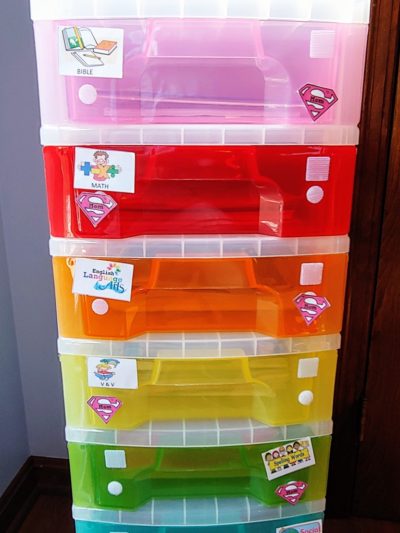New to homeschooling? When ‘freak out’ mode occurs, it is because you are looking at the whole picture of what homeschool might look like. That is overwhelming! The key is to create your goals, make a road map and look at small sections of the homeschooling picture. When you have made plans and determined what direction you want to take, you will be able to start homeschooling with confidence. We’ll help you get there with our free worksheets.
Homeschooling starts with your state laws.
The Homeschool Legal Defense Association is an organization that supports home educators. The laws governing homeschooling are regulated by each state so familiarizing yourself with your state’s requirements is your first step. Find out whether you have to notify the district of your intent to homeschool. What kind of records does your state require? Can homeschooled children participate in public or charter school extracurricular activities? You can find out more about the regulations where you live here: Homeschool Laws by State.

Start Homeschooling with a Vision Statement
There is a lot of wasted time and money when you don’t have a plan. Have you ever noticed when you go to the grocery store without a list, you buy stuff you don’t want and it takes longer because there is no direction? Imagine doing a road trip without an idea of where you are going. The key is making a plan. Seriously, don’t skip this step!
Almost all families who first start to consider homeschooling want to begin by choosing subjects and buying curriculum. Your homeschool vision statement is a game plan with your children acting as back seat drivers. There are so many choices in the homeschool world, it becomes easy to get distracted and head off into unknown directions. A vision statement gives direction for channeling resources in order to manage homeschool goals. Here are two free worksheets.
Long Term Vision
Use the worksheets as you continue reading. Your vision statements do not need to be in depth, just a few words or sentences will suffice. Keep in mind the visionary map is not set in stone, and some parts will change along the way – just like kids do!
Why am I homeschooling?
What is your main reason for homeschooling? Some reasons might include:
- My son or daughter needs confidence.
- There are too many food rewards and parties in the classroom. (PWS)
- I want control over my child’s education.
- The bus trip is too long.
- My child gets too tired in the afternoon and can’t stay awake.
- Bullying.
- We have no choice! Thanks Covid!
If you are a Covid homeschooling parent whose goal is to just make it through the first year, I still encourage you to consider thinking about your long and short-term goals.

What are your family beliefs and values?
Every family has a different set of core values and beliefs. What do you believe? Here’s a few suggestions from other vision statements.
I/we believe that:
- hard work and responsibility is important.
- the family should eat and pray together.
- elders should be valued and respected.
- that God is the head of our family and school.
- hard work, motivation and positive thinking is important.
What do you want for your children after graduation?
If you could plan your child’s future what would it look like? Is the final goal college or maybe trade school? What kinds of skills will you teach so that your child is prepared for entering the market place? Maybe you just want your special needs child to graduate happy, confident, and have skills to survive without you.
What kind of education do you want for your children?
Do you want a Christian based education? Do you want a Montessori-style education? Will you spend most of your days outdoors? Do you want to make sure your student has a varied high school transcript?
If you plan on your children going onto higher learning (Yes, it is possible.) then you are going to look at creating a transcript that colleges will notice. AP courses, a year abroad, outstanding extracurricular activities will all add diversity to your transcript. Your vision statement will focus on the college-bound path. By the way, homeschoolers do go to college, and they take SAT and ACT exams like all the other students.
However, if college for your special needs child is not in the game plan the vision statement will look very different. You might decide that life skills, social skills and subjects, like consumer math are more important than conquering courses that college bound students need. You can see how the vision statement will be your game plan and your individual children are going to determine the path.

Summarize your Vision
Your long term vision summary will be a short summary of all of your statements in a few sentences. Here are some examples:
- Our goal in homeschooling is to prepare our children to love and serve God. Whether they go to college or into the mission field, we want them to have strong moral values that will include: Loving others, kindness to all living beings, a passion for work, and the heart to say, ‘no’.
- We will teach the skills necessary to live life, whether at home or in a group home. We want our child to embrace education and have a strong work ethic in whatever they do.
- I want my children to learn to love God first and family second. Our education will teach them to live life while embracing every adventure, and to be thankful for each and every day.
- I wish college were in the future, but I know it won’t be. I want to find a safe place for Cathy to live semi-independently. Meanwhile, I will introduce tons of subjects and skills so that I can to help her become a happy, caring individual who thinks of others first.
A big thank you to those who allowed me to use their vision statements! As you can see all statements have goals and are as varied as the people who wrote them.
Short Term Vision
The Short Term Vision Statement is going to tell you what your year will look like. What do you want to accomplish for this particular school year? Determine strengths and weakness for each child. Add in new skills that you want your child to accomplish.
Knowing your short term goals will help you determine the subjects you want to incorporate in your school day. Consider what subjects will you need in order to accomplish your goals?

It is okay to start over.
A family, who will start homeschooling this fall, recently called me. They were lost and unsure what to do with their 11-year old that they had just pulled out of school. They felt their son had been passed from grade to grade and was not sure how behind he was. In the end, they were at peace with their decision to restart second grade. Why keep moving forward when the material isn’t understood?
Extra Curricular Activities
Where do your extracurricular activities fit into your educational plan? Do they:
- add dimension to a subject?
- fit in with your long term and short term vision statements?
- fit with your beliefs?
- make your life too busy?
Consider how much time it will take to drive to and from activities. To alleviate the busyness that activities can cause, a vision statement will also help you say ‘no’ to many opportunities.
Kids need time to be kids, so save lots of time for outdoor play! Children who learn to build forts with sticks or dams with rocks will have a more well rounded imagination. Having free time to plan, construct, and problem solve at an early age will spill over into their future careers.

What will school look like at home?
Homeschool does not have to look like classic school and it certainly doesn’t need to take as long. On the average, most homeschool days should be 1-5 hours, depending on the age of the student.
When you start homeschooling where will it take place? Will it be at the dining room table, in a bedroom, outdoors, or in a dedicated homeschool space?
Homeschoolers are not hindered by set schedules. If your children are wild about Chemistry, it is not a surprise when what was suppose to cover an entire year is accomplished in six weeks. Let their excitement take over!
Choosing Subjects
Looking at your short term vision worksheet, what subjects will help you accomplish your goals? Create your entire list of subjects. Keep it simple!
Subject Branches
Subject branching is the moment you notice your child is interested in something you read or hear about. Think of the subject like a tree trunk and the branches are the different topics that can form from that trunk. If you are reading about WWII (the trunk) and Junior gets very interested in the Morse Code (a branch), nurture that interest! You might even consider learning to tap out messages.
How do I find Curriculum?
Network with other homeschoolers either in person, by group, or on social media. Google: homeschool> name of the subject>curriculum and you will instantly have loads of imformation to browse. My personal suggestion: Never purchase a curriculum that does not offer a peek inside. Not all curriculum is created equal so checking out the content is wise.
Here is just a few places to shop for competitive prices:
Rainbow Resource Center
Christian Bookstore (Look for the Homeschool Tab)
Homeschool Buyers Co-op
Used Homeschool Books
Homeschool Classifieds

What Curriculum Should I Use?
Follow your vision statement and the goals you determined. Google: subject>subject>grade>curriculum.
If you want a Christian curriculum you might try A Beka, Sonlight, or BJU, to name a few. I understand Seton is a top pick for a Catholic education. Charlotte Mason Education is based on living books and education through narrative reading. If you have preschoolers, check out the free printables at Confessions of a Homeschooler, or other blogs.
If you really, really, REALLY still aren’t sure, then go the free route. Some families start homeschooling with free on-line programs and then decide there is no reason to change. Homeschool programs, like Easy Peasy, All-in-One Homeschool, are free. They offer free, complete homeschool programs for every grade.
Don’t fall into the age-grade trap where you think because your child is age 13, you need to purchase only Junior High Curriculum. If math is lower than average, drop back to the matching grade level. Get the foundation firmed up! If you have a whiz-kid at spelling, move ahead until you find a grade that fits the level. Homeschooling is about catering to the child, not the grade level.

How do I Organize my Homeschool Day?
This is my favorite question. When you start homeschooling you will find that organization keeps the chaos at bay. Three years ago, I revolutionized our homeschool day by using the Work Box System. It has been awesome! The Work Box System organizes your school subjects and gives the children independence and responsibility to complete work on their own. I like the added productivity and efficiency in our day. You can watch our video or read more about our organization system at:
Homeschool Independence with the Work Box System
School pictures, Yearbooks, and Prom
I have heard the “Woe is us! My homeschooler will miss out on school pictures, yearbooks and prom” spiel. Contrary to popular belief, homeschoolers do not need to miss pivitol functions of classic school – unless they choose to.
Our homeschool co-op takes school photos every year for the co-op year book. You can take your own photos or have them done professionally. Keep the camera near by and create a photo album of the ‘year in photos’.
If prom is part of your vision statement, find a homeschool prom in your area. You can check with local homeschool groups or co-ops in the area for suggestions. Your state laws might have a provision that homeschoolers can attend extracurricular activities.

What about Socialization?
Unless your family lives in the middle of 3000 acres, socializing is not an issue! If anything, getting school work finished is more an issue. Read more about Homeschooling and the Socialization Issue.
You’ve Got This!
Hopefully, we have helped you get a good start on homeschooling. Good luck on your endeavors! Parents need mentors too! If you need help, you can email us or comment below we will be glad to help!
Need some fun family science activities? Check out our Family Science Labs.


